The Talos Principle 2 Review
It can be exhilarating when a game challenges the mind. Puzzle games usually excel at this, immersing players in test environments filled with various contraptions. Yet, some games transcend the rational, tempting players to consider the metaphysical. The Talos Principle was nearly the perfect combination of both, which was surprising given it emerged from a developer previously known for their straightforward old-school shooters. Croteam could have tried to replicate their success, but The Talos Principle 2 represents an evolution of the formula, maintaining its philosophical core and adding a welcomed human touch. With grander, sprawling levels teeming with intricate puzzles, The Talos Principle 2 explores profound concepts and forges deeper connections. It stands as one of the most intellectually stimulating and thought-provoking games in years.
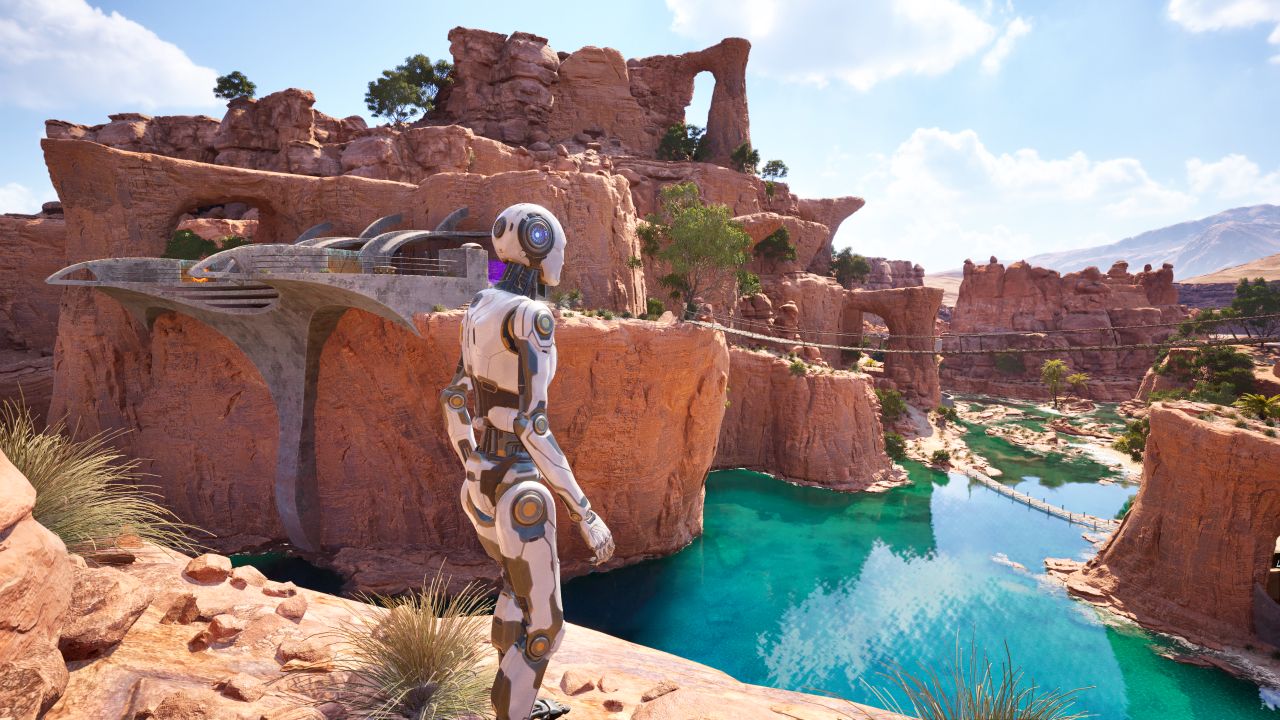
In the futuristic setting of The Talos Principle 2, humanity has been wiped out by a mysterious virus. Before their demise, a group of scientists created an iterative puzzle-based simulation to make new intelligent beings using human history and knowledge. In the first game, players solved puzzles to finish that simulation and were given a robot body and thrust into the real world. In the sequel, the first of these intelligences is named Athena.
A millennium has passed since Athena was born, and hundreds more have ascended to become sentient beings that call themselves humans. After solving a few good tutorial puzzles inside the simulation, the player joins them as the 1000th born, known as 1k. This is quite the coincidence, as Athena set a limit of 1000 to maintain balance with nature and avoid humankind’s past mistakes. As the player listens to a speech on this momentous day, a strange particle cloud forms into the Greek god Prometheus, compelling all to find the flame. An energy spike on a distant island seems to be the origin of this message. As the youngest in the community, 1k is roped into an expedition to discover answers and will help decide the future of this new human species.
The unfinished and utopian city of New Jerusalem is home to most of the robotic humans. Some others died tragically during a failed expansion, and a few vanished, including the city’s founder, Athena. Those remaining are divided on what to do next. Some believe it is time to focus on maintaining the harmony with Earth, as planned. Others are frustrated that the city is barely functioning and need guidance. And many believe they should now expand to create more art and tech. Players can explore a public space in the city before they embark (and at the midpoint) to uncover great background lore, and chat to others about everything big and small. New Jerusalem has a hands-on museum dedicated to the simulation, which is a fantastic way to incorporate the original game’s concepts. Along with a conversation log, there is a social media stream to read at anytime. It is scary good how much this is like the real thing, with arguing, age bias (humans are tagged with a birth number), conspiracies, and updates as the expedition unfolds.
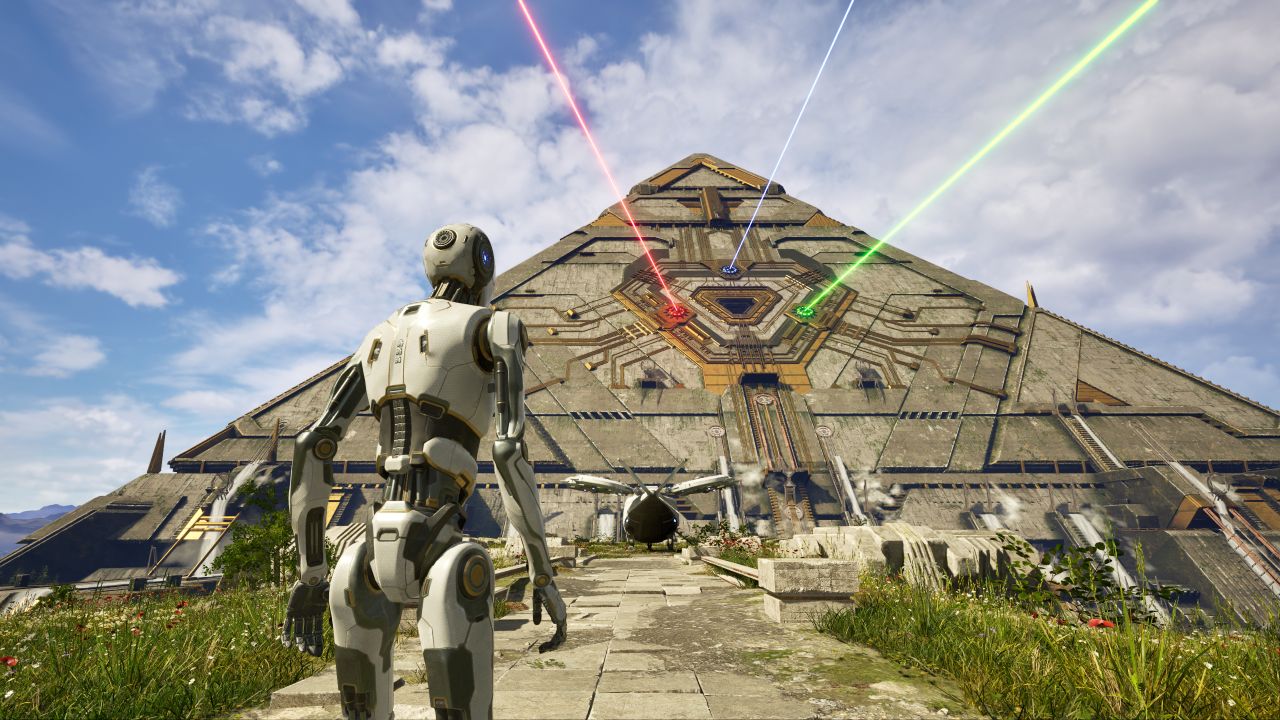
Joining you on the expedition are four diverse and interesting personalities: a visionary, a problem-solver, a romantic, and a protector. As you converse with them, you’ll explore thought-provoking topics, many of which can be related to modern society. It is easy to get temporarily swayed by their opinion. The sequel delves even deeper into the philosophical side, and with the same writing team, the narrative is a genuine progression of the original’s intellectual themes.
The discussions tackle profound questions, such as the role of sentience in the cosmos, the coexistence of civilizations with the natural world, and the pursuit of knowledge. Remarkably, the game navigates these subjects without being pretentious, offering an unbiased view of multiple perspectives. It also maintains a down-to-earth quality, exemplified by poignant audio logs of a simple IT worker named Trevor, recorded just before his demise from the virus. Trevor’s seemingly discordant role evolves into a compelling emotional thread. Additionally, the game weaves a rich tapestry of other themes that include grief, love, parenthood, identity, relationships, and eternal life. These allow players to forge meaningful connections with New Jerusalem and their companions. There are a few player choices too, altering who becomes the mayor and which companions join 1k at the end. When all put together, the narrative is a monumental fusion of smart ideas.
The actual expedition begins with players visiting a giant artificial pyramid called the megastructure, the source of the message from Prometheus. Unfortunately it is locked and appears dormant. To enter the four main parts of the megastructure, players must visit three tower sites at each point on the compass. While the batches of three towers are unlocked linearly, players can freely go back to previous areas via a monorail system. Each site has strange buildings scattered about the landscape, housing the puzzles that need to be solved. Complete any eight (out of ten) puzzles to enter the regional tower. Inside the tower, you speak to god-like beings (including Prometheus) that have parables, riddles, and wisdom to bestow, directing players along divergent philosophical paths and raising more stimulating question that percolate in the background.
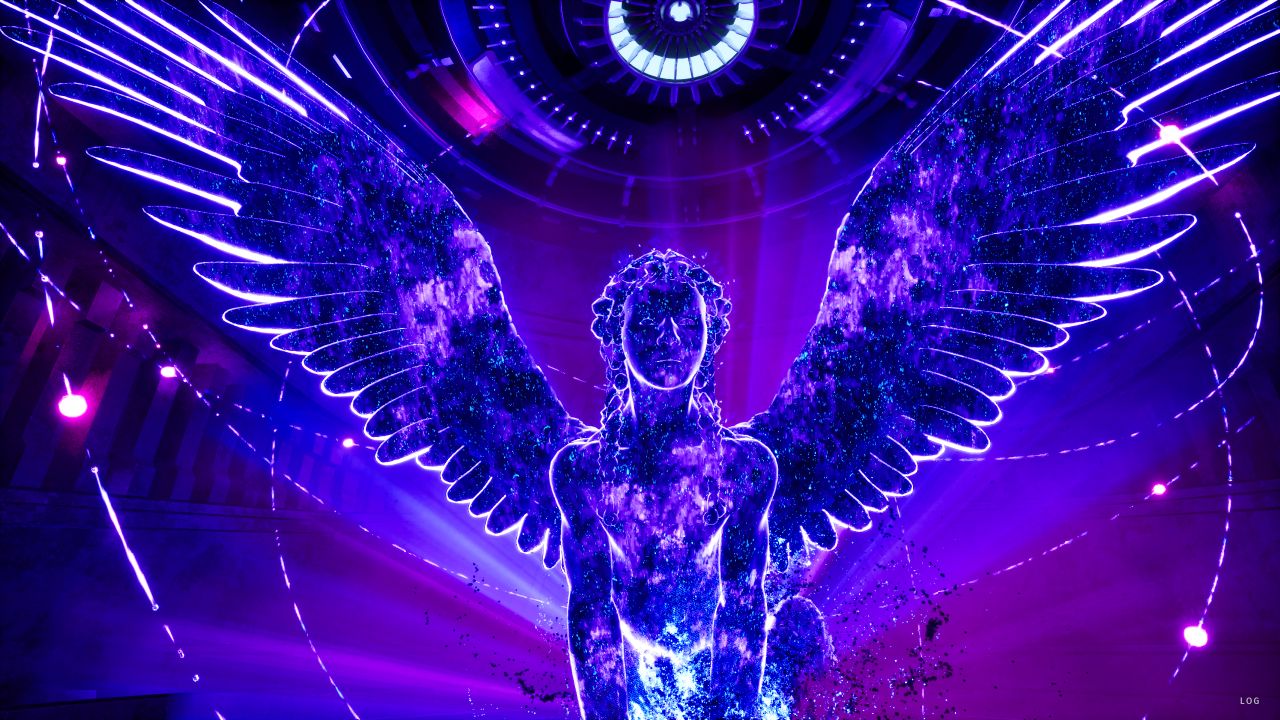
The twelve main sites are large open natural spaces with winding paths, lush foliage, and some animal life. Despite being part of the same large island, they are geographically diverse with stunning locales such as a desert oasis, a foggy marshland, and snowy mountains. Eight puzzles are carefully signposted on a path, and following this creates a smooth learning curve. Two more are hidden away in remote corners, and these are a fraction harder. Each site has plenty of great optional side content in the form of audio logs, secret labs, monuments, collectibles, puzzle-skip credits, and a few out-of-the-box enigmas to complete for self-satisfaction. All major points of interest are marked on a Skyrim-like compass, and players can go in any direction they wish. Your companions wander the paths and often have new things to say, offering a nice break from exploring.
Entering a puzzle building is also a welcome change of focus, since most are quick to complete. And because there is good variety and tangible contraptions to move about, it is actually exciting to get started. Puzzle design is similar to the first game and revolves around linking laser beams to colored switches in order to open force-fields or activate devices. Connectors join beams together. RGB switchers change the laser color. And accumulators store a color for later. Sending lasers to the right switches can be tricky because it requires line-of-sight and making sure there is no interference from other beams. Additional puzzle elements comprise of the usual assortment of boxes, pressure switches, jammers, and spinning fans that provide lift. The advanced contraptions require more thought, including a driller that cuts a hole in specific walls, a teleporter, an anti-gravity tunnel, and a mind transfer system. Each major contraption is usually restricted to a few of the twelve areas, to keep the puzzling nicely focused.
Given so many parts, it is great that most puzzles only use a handful of these devices. Skill comes in their placement and execution order rather than deciphering thousands of possibilities. The first step is usually to identify where everything is and free any imprisoned contraptions. Some puzzles provide everything up front and set you free to make each link in the chain. In general, it is hard to break puzzles but a checkpoint restart is always there to get back to baseline. While most puzzles are a bit easy, their rapid completion suits the open world layout and helps maintain a steady pace.
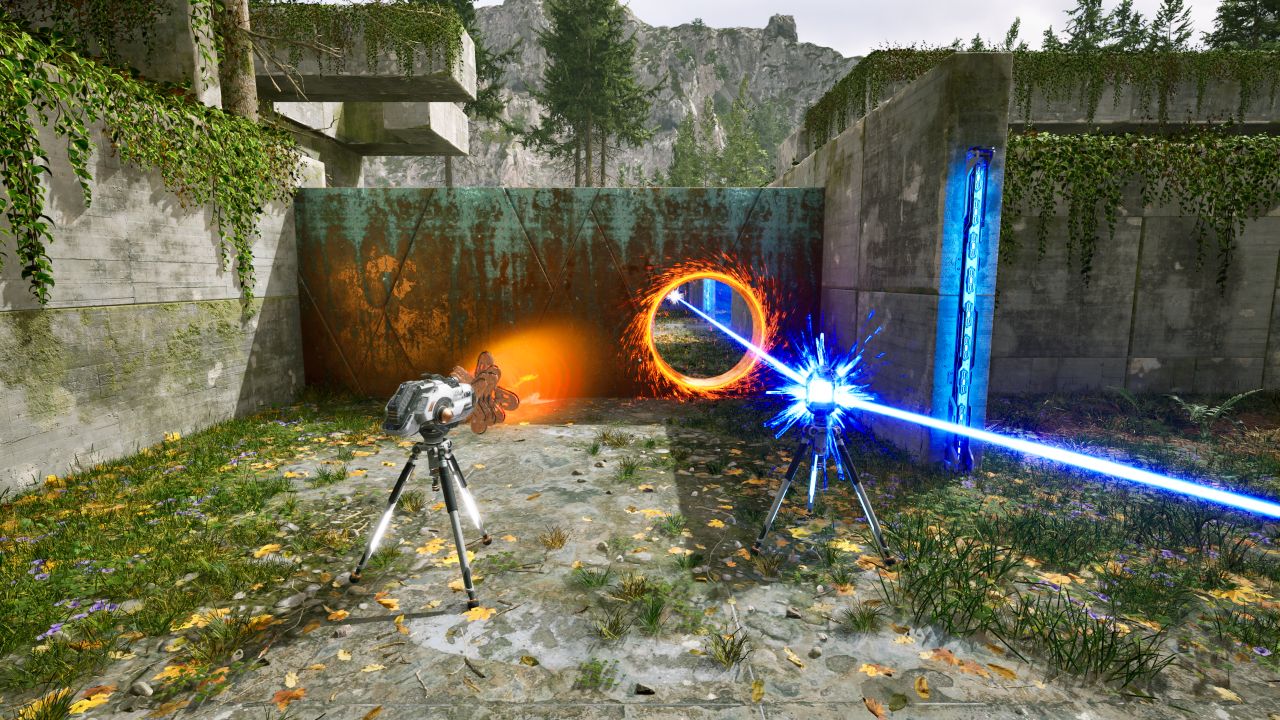
A set of much tougher gold puzzles is accessible near the game’s conclusion, after solving all the unnumbered ones. These offer considerably more challenge, despite containing roughly the same number of moving parts. A few seemed impossible, until a trick revealed itself via experimentation or blind luck. The best ones use quirks that can be observed during previous bouts of problem solving. One brilliant challenge used a connector and an accumulator situated behind force-fields and was overcome simply by placing myself in the solution. Since the intrinsic reward is proportional to the difficulty, doing the gold challenges is highly recommended. Completing them provides a slightly different (and better) ending and should only take a handful more hours on top of the 20-25 hour adventure.
The only puzzles that drag down the game are the silly bridges that are built from large 3D tetromino blocks. These are a bit like the sigil puzzles from the first game, but the pieces are placed down from first-person (or third-person) view while you stand on the partially completed bridge. While most bridges can be constructed rapidly without much thought, some proved frustratingly random. It ended up being more about iterating through blocks, than trying to think spatially. Removing incorrect pieces is also clumsy as you walk backwards around the fragmented gangways. One interlude inside the megastructure had way too many of these tetromino bridges and it was the longest continuous blemish in the otherwise slick collection of puzzles.
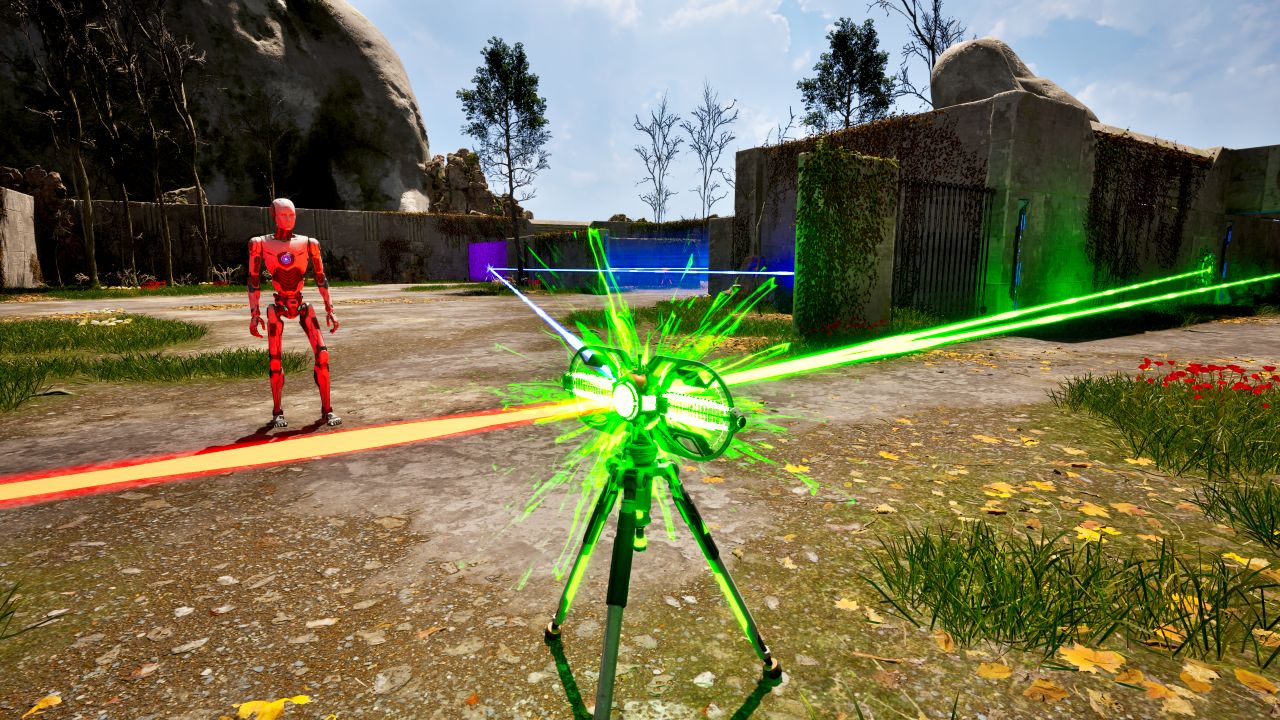
Some of the levels are also too big. The game trends towards throwing players into bigger and bigger areas as it progresses. But since each contains the same number of puzzles and side content, you’ll be holding down the sprint key with more conviction than Socrates in a heated debate. The larger sites have lots of empty corners, so it just takes longer to hunt for collectibles. Admittedly, these bigger levels are the most visually imposing and artistically impressive, with cool monuments and grand statues. But the smaller woodland areas have a relaxing quaintness that is just as easily appreciated.
The Talos Principle 2 is the first time Croteam have moved away from their own Serious engine, adopting Unreal 5 instead. The change is generally positive and the game looks nice most of the time, thanks to natural lighting, high-res textures, and detailed geometry, albeit with patchy global illumination and annoying motion trails. The natural landscapes are idyllic while the puzzle buildings offer wonderful contrast with their brutalism architecture, showcasing blocky concrete, and neo-futurism design, featuring swooping curves. Each region has unique building aesthetics, so it comes across like the world-hopping Myst. The soundtrack works in harmony, combining the orchestral and ethereal, with piano, guitar, tribal notes, and choirs. Featuring broad crests and lengthy silences, the thinking music instills child-like wonder, melancholy, and inspiration. Plus the large cast of characters is voiced well, with some emotional moments and a few doses of apt poetry. Fortunately the game performs decently at near max settings, albeit with the inbuilt upscaling tech, which more and more games are using these days to squeeze out higher framerates.
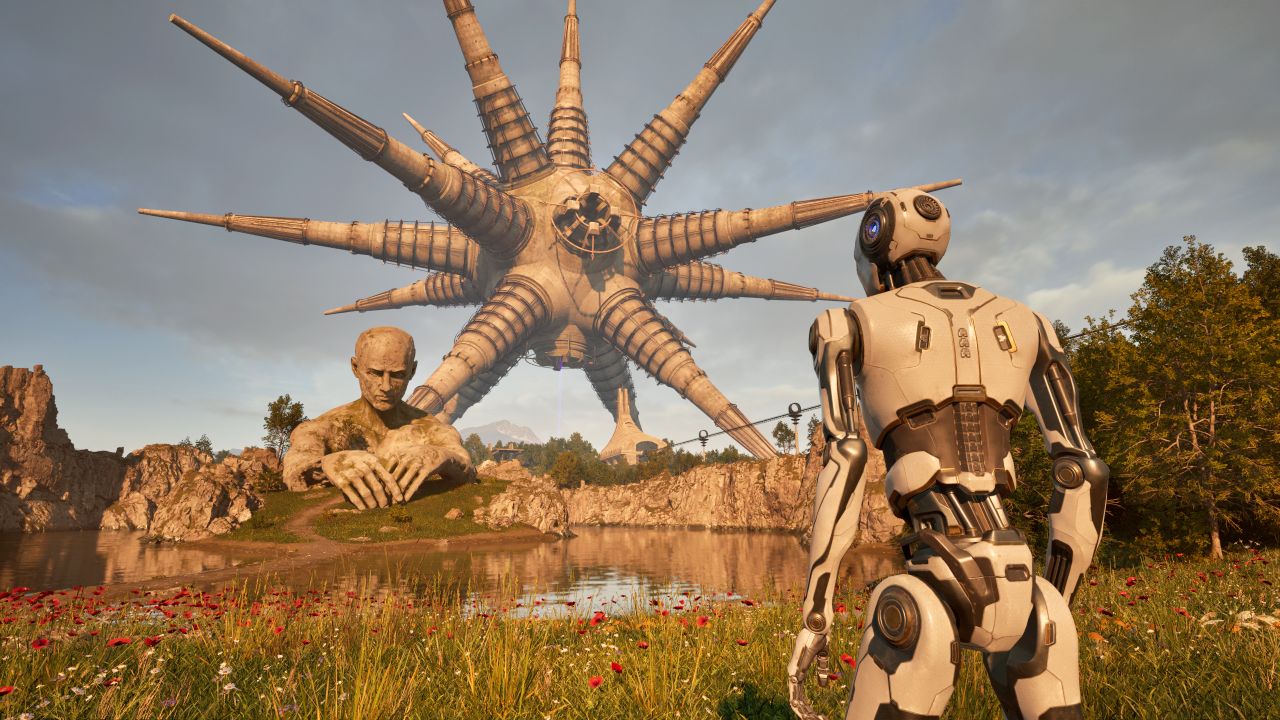
The Talos Principle 2 proves, once again, that blending philosophy with puzzles is a winning combination. The two facets are perfectly complementary, with one focusing on the present and tangible, and the other referring to the distant and undefined. It is not quite a flawless sequel, because the bridge challenges are disappointing, the difficulty is a touch easy, and a few areas are too big. But these issues are small potatoes when so much of the rest works. The higher concepts remain enthralling, the human connection gives it heart, and the puzzles are generally perfectly sized, nicely varied, and well distributed around attractive landscapes that give players freedom to explore. So if you seek to ponder puzzles and pantomime Plato, position The Talos Principle 2 at the forefront of your mind.
